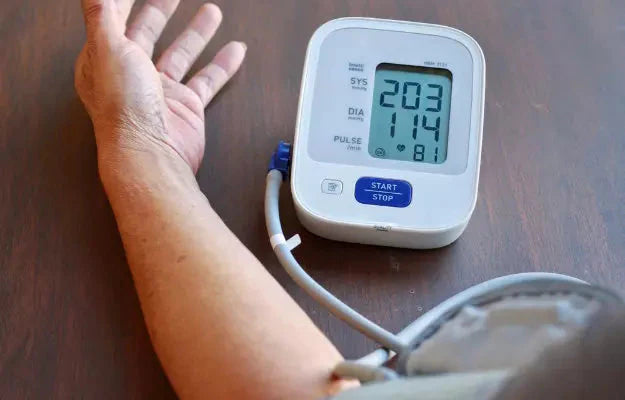
Why Systolic and Diastolic Blood Pressure Are Both Important
Time to read 5 min
Time to read 5 min
Blood pressure is the vital measurement of heart health. It is characterized by two significant components: systolic blood pressure and diastolic blood pressure. For a healthy adult, a blood pressure reading of 120 over 80 is considered normal. Here, the systolic blood pressure is 120 and the diastolic blood pressure is 80.
Children and teenagers may have slightly lower blood pressure. Older adults may also have lower or higher blood pressure. Both of these conditions are considered normal.
Both systolic and diastolic blood pressures are important, as both measures give vital information about your health condition. However, doctors usually give more importance to high systolic pressure to determine your risk of heart disease. This post will discuss the importance of both systolic and diastolic blood pressure.
Systolic blood pressure is the highest number of blood pressure readings. For example, if your blood pressure is 140/80 mm hg, 140 will be the systolic pressure. So, systolic blood pressure is always higher than the diastolic blood pressure.
During every heartbeat, the heart pushes blood into the arteries. Systolic blood pressure is the specific measure of the pressure within the arteries. This phase is known as systole, where the blood pressure is the highest.
Below the systolic blood pressure reading of 120 mm Hg, is considered normal blood pressure. Systolic pressure below 90 mm Hg is considered low blood pressure and may require medical assistance. If you get multiple systolic pressure readings above 180 mmHg, it is considered dangerously high blood pressure. This condition also requires medical assistance.
When a person exercises or feels stressed, the heart muscle pushes out the blood with high pressure. With this condition, the systolic pressure goes up. In these cases, the high blood pressure is normal. But if your blood pressure is high when you rest, that is not normal, and it's considered severely high blood pressure.
As your blood pressure can go up when you are active, it's important to check your blood pressure when you rest to diagnose high blood pressure accurately. High systolic blood pressure is usually caused by the stiffening of the arteries. This condition makes the heart work harder to push blood through the arteries.
In the high systolic blood pressure range, different stages include:
If you have systolic high pressure, consult your physician ASAP to get the best suggestion.
The heart takes a rest between every beat to refill the blood and this pause between the beats is known as diastole. The measurement of blood pressure during the resting phase before the next heartbeat is considered diastolic blood pressure.
In resting time, the usual diastolic blood pressure remains below 8 mm Hg. If you have high blood pressure, the diastolic pressure will be higher than the normal range. Diastolic blood pressure is considered extremely low when it is 60 mm Hg or lower than this.
Low diastolic blood pressure is a common case in people with dehydration or severe bleeding. It also may happen if your arteries relax and widen. Multiple stages of high diastolic blood pressure include;
Blood pressure measurement is very significant to monitor your health status. Blood pressure that is very low or high can cause various symptoms and increase various risk factors for your health.
When the heart beats, it passes the blood through the arteries and travels throughout the body. However, it is not a steady stream. The amount of pressure that the blood exerts changes from moment to moment. It is highest during the systolic pressure and lowest during the diastolic pressure.
We must say that your systolic and diastolic blood pressures are both equally important. If the reading is very high, you have high blood pressure. If the reading is very low, you may not have sufficient blood flow in your body. Besides, if you notice severe difference between the two blood pressure measurements, there may be a heart condition or other health problem.
If you want to understand the difference between systolic and diastolic blood pressure, you can consider the below points.
Blood pressure is the measurement of the pressure in the arteries during the beating and resting period of the heart. Both measurements of systolic and diastolic blood pressure are important for diagnosis and managing high blood pressure. Both of these measurements are important to know your health condition, including severe blood loss or heart disease. It's important to get an accurate blood pressure reading to get the proper treatments as well.
Both numbers in the blood pressure reading are essential to diagnose and treat any health condition. However, doctors mainly focus on the top number or the systolic pressure.
140 over 70 is not a good blood pressure reading. It is considered stage 2 high blood pressure.
Yes, high diastolic blood pressure is a matter of concern. This condition increases the risk of various health conditions like heart attack and stroke.
** Medical Disclaimer - The following information is for educational purposes only. No information provided on this website, including text, graphic, and images, are intended as substitutes for professional medical advice. Please consult with your doctor about specific medical advice pertaining to your condition(s).





